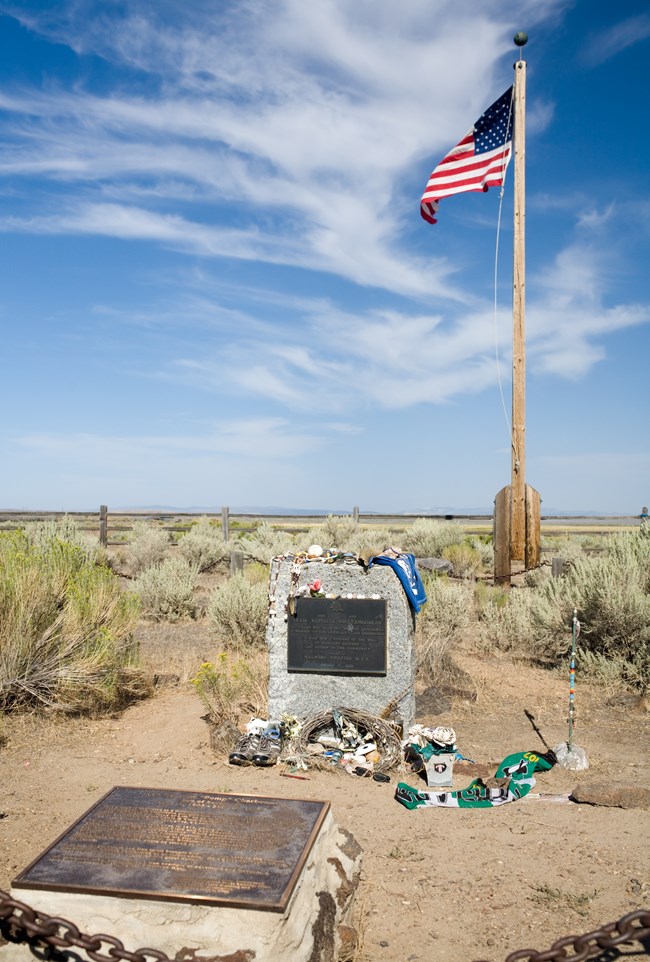Last updated: May 18, 2020
Article
Death of Jean-Baptiste Charbonneau

Photo: Creative Commons, 2.0, Jay Edgerton
If that journey wasn’t amazing enough, Jean-Baptiste was educated by William Clark in St. Louis, then spent six years in Europe becoming fluent in English, German, French, and Spanish. Upon his return to North America in 1829, he roamed the far west for nearly 40 years, as a mountain man, guide, interpreter, magistrate, and gold prospector.
But in 1866, when moving to Montana to seek a new gold strike, he crossed the frigid waters below the junction of Jordan Creek and the Owyhee River. His clothes were soaked in the freezing water and the cold April wind and rain pushed him to be severely sick. Prostrate with a high fever, Jean-Baptiste was moved about 25 miles to the nearest shelter at Inskip’s station. He died on May 16 – most believe of pneumonia – within just 250 miles of his mother’s birthplace. He was laid to rest nearby at the mouth of Cow Creek west of the present day town of Jordan Valley, near the Oregon/Idaho border.
On March 14, 1973, his gravesite was designated a Registered National Historic Place. Jean-Baptiste had no verifiable descendants.
